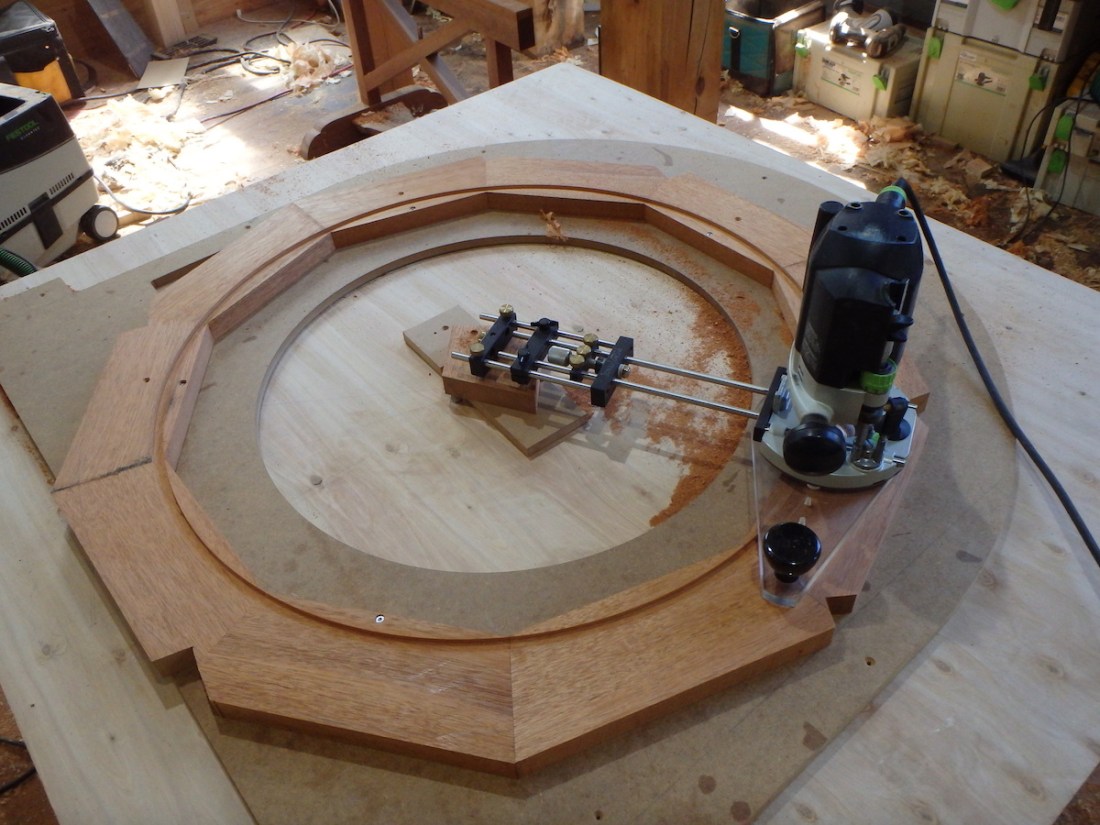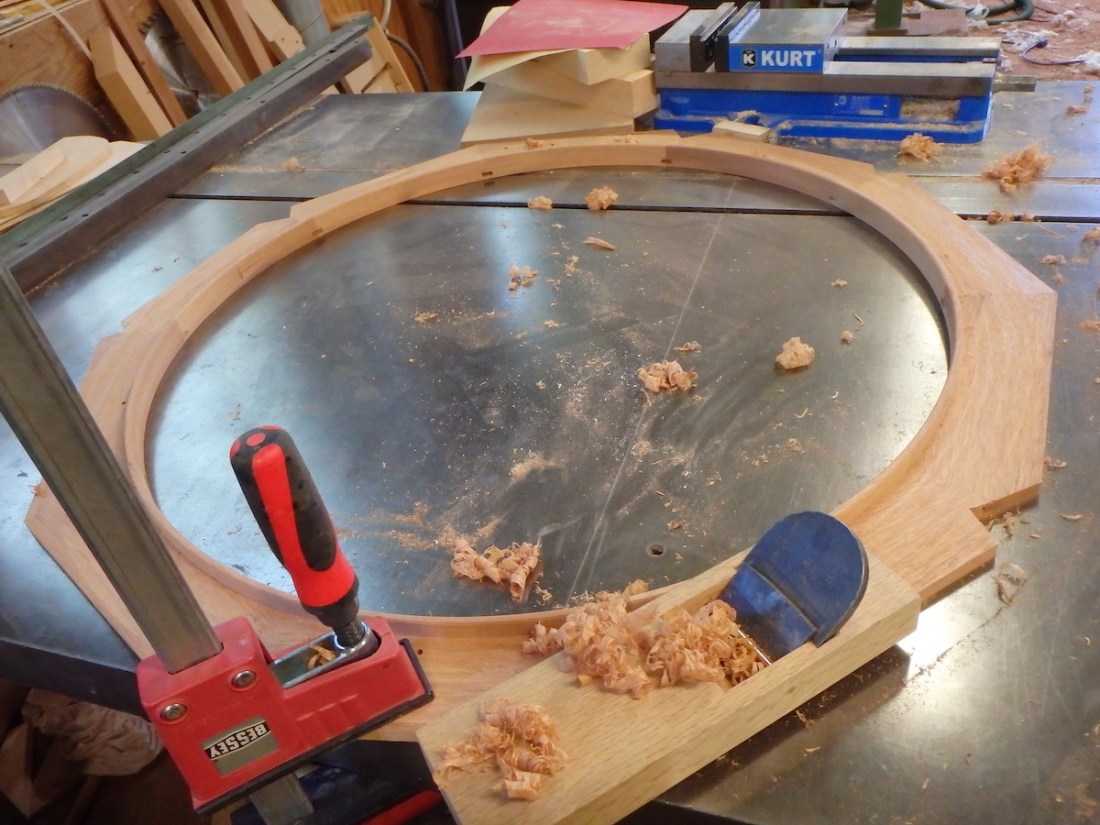Things have been progressing smoothly, save for a glitch on one front, which has pushed the install date back a couple of weeks.
In the past couple of weeks, there were a few days where many bats were hanging about the shop, including this one which clung to the front door one day:

I believe this to be a juvenile large brown bat (Eptesicus fuscus), one of two species common in Massachusetts, but I’m not totally sure.
I later found a second bat treading water, and quite groggy, in my sharpening pond, and then a day later another one hanging around under my planer which tried in vain to scare me off with some bared teeth. I put these visitors into a box and placed them out on the yard so they could find their way back to wherever home is when night fell. I’ve had no surprise visits since. I like bats, and given the problems bat species have been facing in N. America due to white nose syndrome, which has laid waste to their populations, it was good to see some on the scene after what had been a few years where I hadn’t noticed any.
The symbolism though, of the upside-down bat reminded me strongly of an aspect of Chinese design iconography. The bat is an auspicious symbol, suggesting good fortune. Many in this country will find that a baffling association, since many have been conditioned since they were young to have strong aversion to bats and similar animals, and think of bats largely in association to halloween, and as ‘spooky’. I’m not sure if the average Chinese person these days feels positively toward bats, but in classical art references, the upside down bat image is found quite often. Take this Qing dynasty gourd-shaped vase decorated with red bats for example:

(photo © Asian Art Museum of San Francisco)
Here the descending bat motif can be seen on a piece of rosewood furniture:

And here’s another example, a bit easier to view, on a Chinese paneled screen:

You may wonder: why is the bat image auspicious? The pronunciation of “bat” in Chinese, 蝠, is “fú” — which happens to be the same as that of some other characters that have a different meaning, such as “blessing” ,福, and another, “riches”, 富.
Add in the character for “upside-down/descending” in Chinese, 倒 , read “dao”, and one obtains the term “fúdao”, for “descending bat”. However, the reading of “dao” is also used for another character, 到, which means “to have arrived”. So, the image of a descending bat, termed “fúdao”, 蝠倒, also suggests the meaning “good fortune has arrived” when written (and pronounced exactly the same) “fúdao”: 福到.
We have puns in English, but these hidden gems of Chinese art are visual puns, more like Rebus puzzles. If you’re not familiar, here’s a Rebus puzzle for you – see if you can work it out:

Anyway, on the topic of Chinese puzzles, recently I have been working on the latticed window for the Chinese room:

Initial time was spent, as you might expect, with stock selection, milling and dimensioning, followed by working through the joinery required on each piece:

As I will be chamfering the sticks on all four arrises, the tenons will be housed a little, as will of course the mitered lap joints.

The outer frame receives a fairly simple splined miter joint at each corner:

While there were multiples of all of the parts, anywhere from 4 to 8 of each different stick, I didn’t manage to do much in the way of gang cutting, rather, worked through the individual cuts stick by stick:

The miters, as with the ones on the Japanese transom featured in the last post, were joined using a pair of splines, a task for my milling machine.
A bit of a pedal-to-the-metal phase made for a lack of assembly photographs or video, however I did manage one of the completed glue up:
![]()
via Tumblr https://davidpires578.tumblr.com/post/176358116244



































